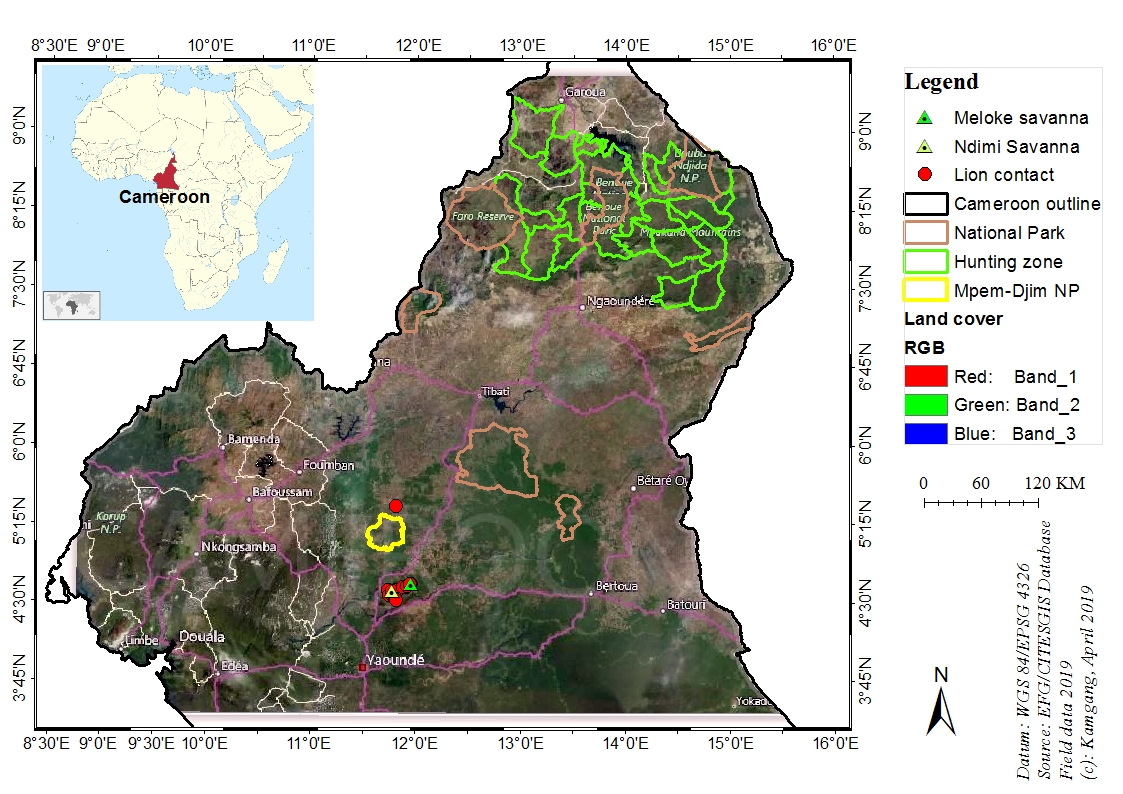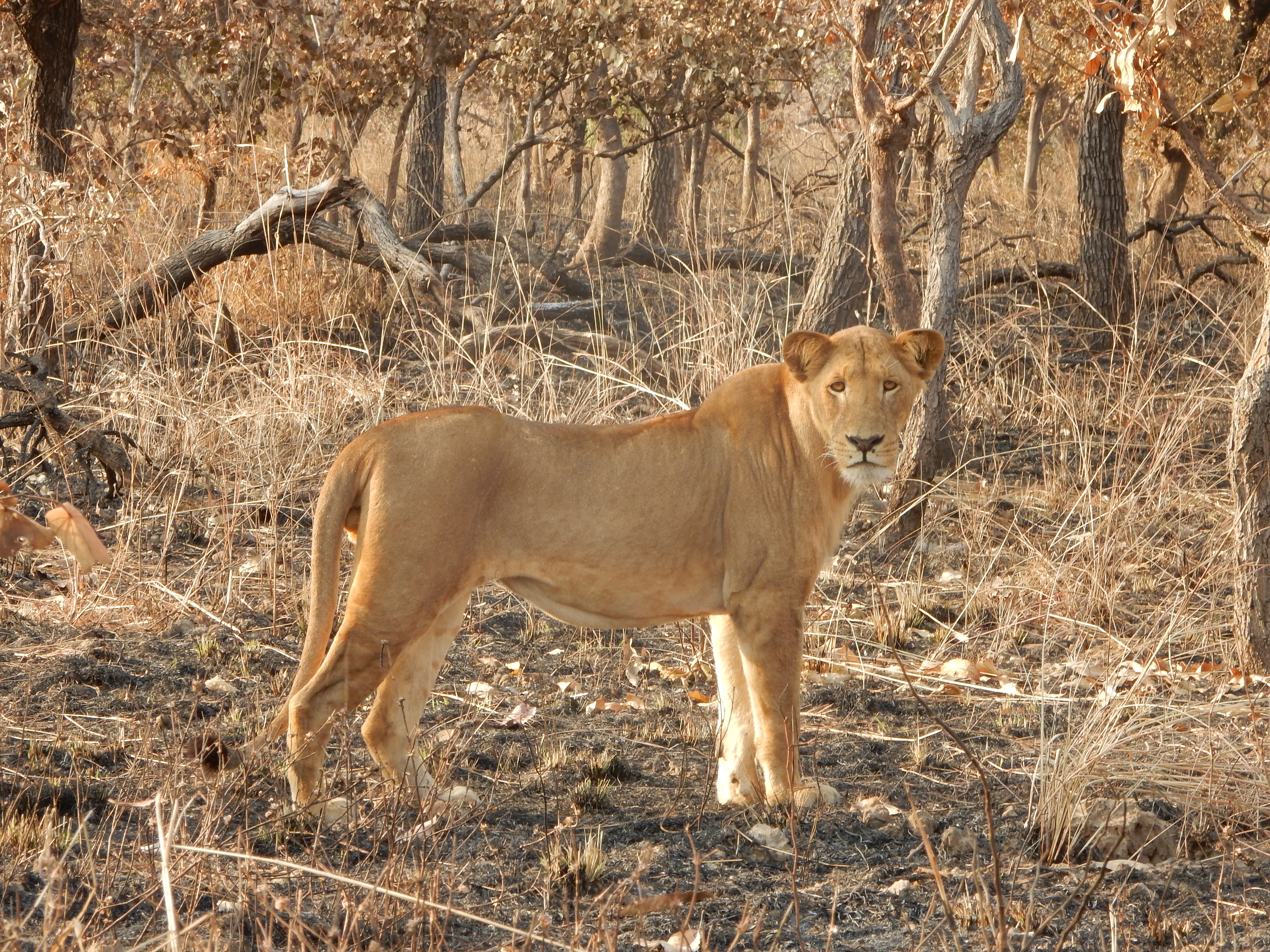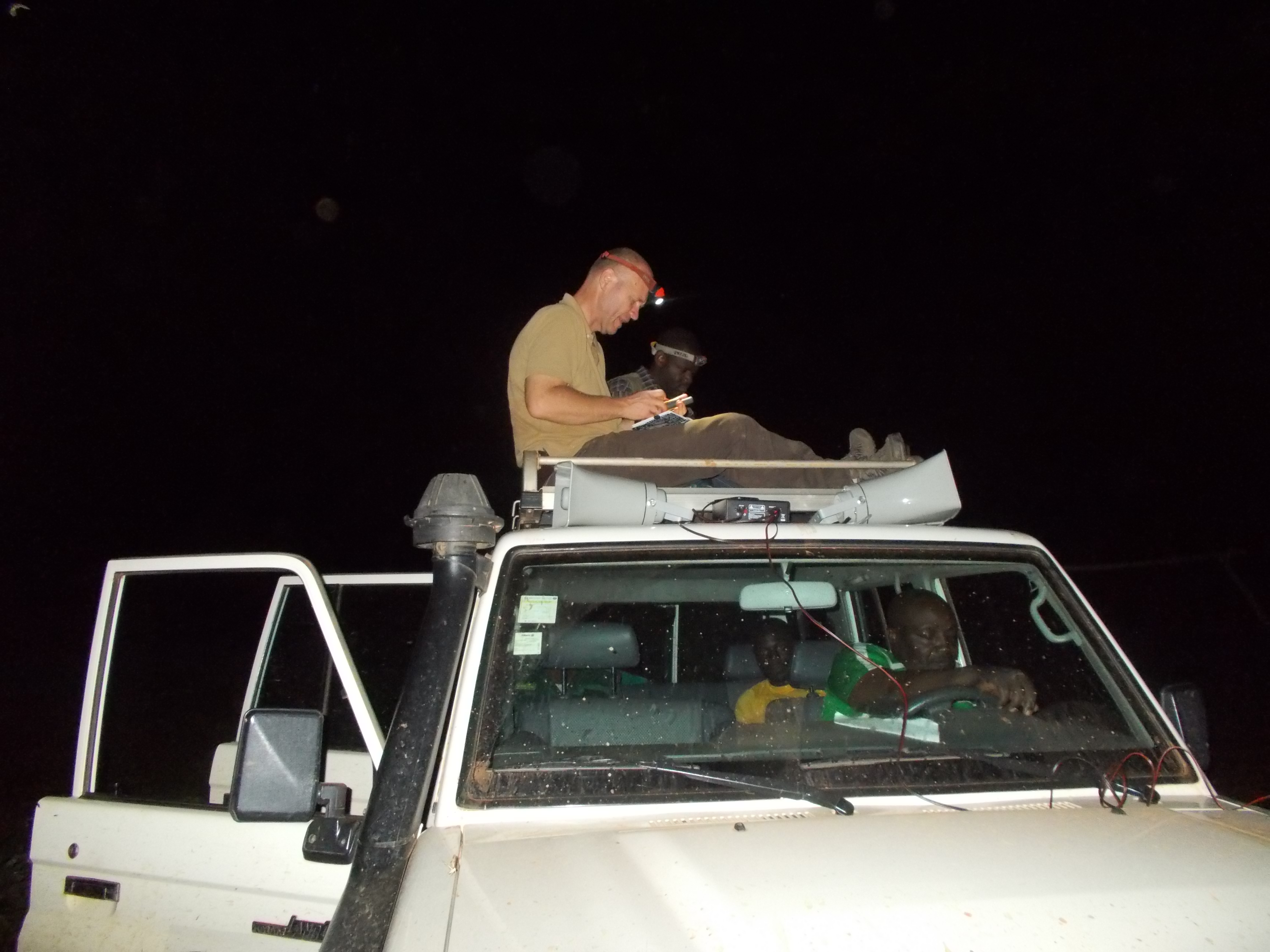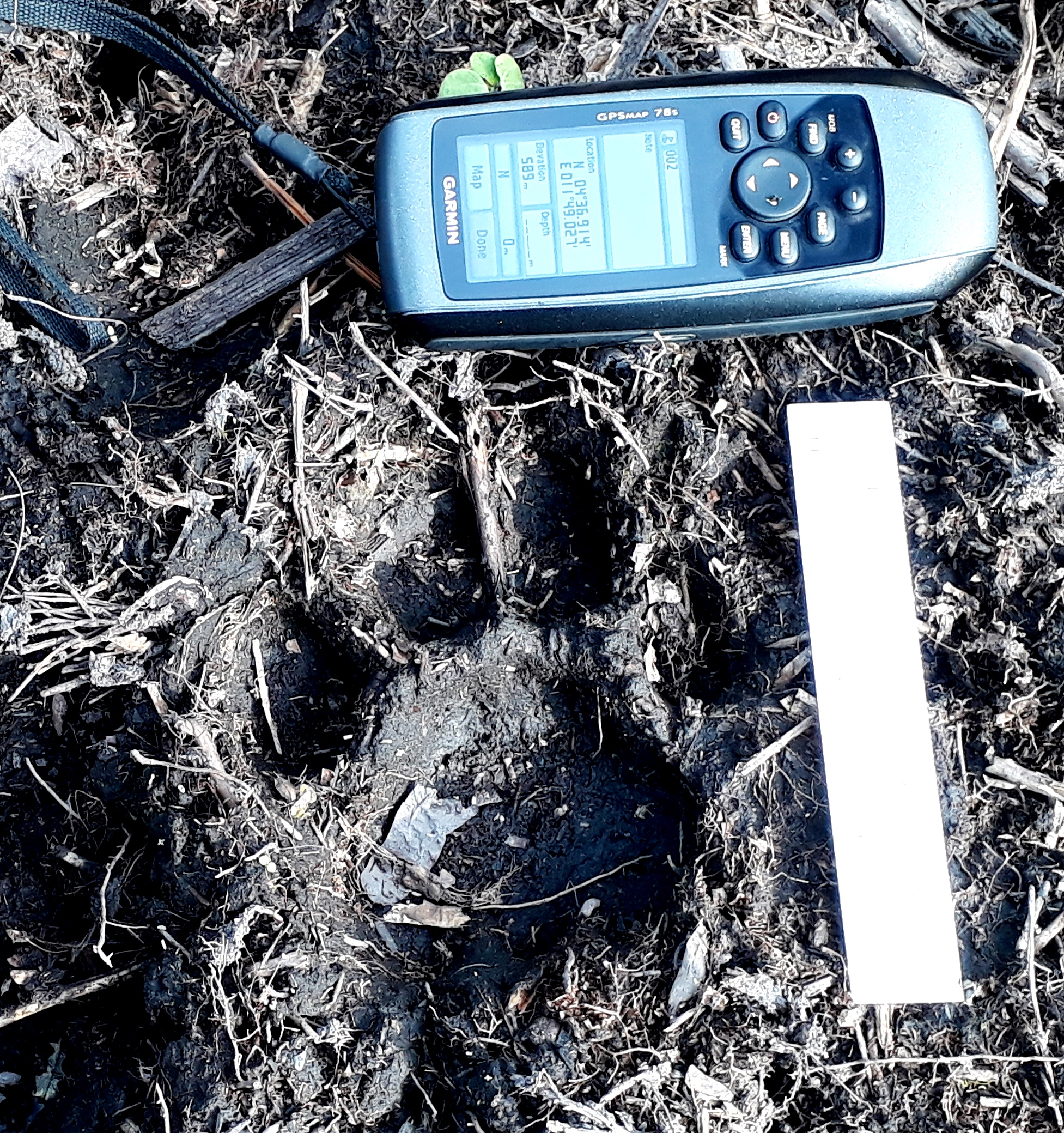News
Lions found in south Cameroon forest, far from their known range
When the Warden of Mpem and Djim National Park heard rumours of lions around his park, he decided to investigate. The nearest known lion population is in Faro National Park 300km to the North, and it seemed impossible that these lions could have dispersed across the human-dominated landscapes all the way to Mpem and Djim. Even less likely was the idea of lions roaming in this mosaic landscape with large savanna areas but dominated by forests.
Pictures of a set of footprints taken by rangers on a mobile phone reached Hans Bauer of WildCRU. Those pictures, fuzzy and without scale, were reason enough to set up an international investigation team. With support from Cameroon authorities, Born Free Foundation and the German development cooperation GIZ, Hans assembled a team that reached Mpem & Djim a week later, and started looking for more tracks, putting up camera traps, investigating prey kills and doing ‘call-ups’ to attract lions with sounds played at high volume.
They soon found lion tracks and cattle with lion bite marks. Thanks to mobile phones, news travel fast, and soon people heard about the team’s presence and reported further sign and other cattle depredation incidents. However, still no one had actually seen a lion – they were obviously very shy and were avoiding people. On the very last day of the 10-day mission, the team finally encountered two male lions.
“The most common image we conjure up of lions in Africa is these great felines dozing off during the heat of the day, against a vast background of wilderness. Yet, a large proportion of the continent’s remaining lions live in human dominated landscapes, keeping a low profile and avoiding contact with people,” said Claudio Sillero, WildCRU’s Deputy Director. “Finding these lions so far away from their established range in northern Cameroon has been the nicest lion news I have had in a long while, proof of their adaptability and resilience.”
“Lions are threatened across their range, but particularly so in Central Africa, and if these two lions are the pioneers of a new population that would be amazing” said Hans. “However, they are currently spending most of their time outside the park and mostly killing livestock, so we need to act urgently.”
Hans continued: “The ministry has given orders to prepare for a translocation and for improvement of park management, to enable possible lion colonisation of the park. GIZ’s programme of ‘Forestry and environment’ is considering eco-development projects in the buffer zones that will integrate livestock protection. Mpem & Djim is only 200km from Yaounde, Cameroon’s capital, and the construction of a road connecting to the park is currently underway; a park with lions, chimpanzees, forest elephants and rich in biodiversity could potentially be secured and supported by tourism.”

-
 Male lion in Bouba Njidda, north Cameroon, from where the Mpen and Djim lions are likely to have originated © IrisKirsten
Male lion in Bouba Njidda, north Cameroon, from where the Mpen and Djim lions are likely to have originated © IrisKirsten -
 Hans doing a call-up, hoping to attract the skittish lions
Hans doing a call-up, hoping to attract the skittish lions -
 Lion spoor near Mpen and Djim
Lion spoor near Mpen and Djim





